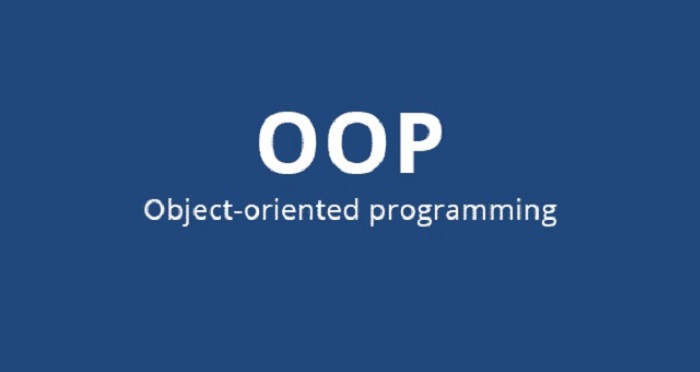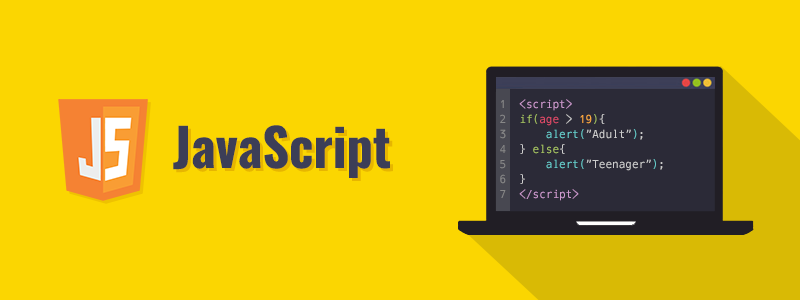JavaScript is an established name in the world of programming languages. It has come a long way, evolving constantly. But, with the evolving technologies and innovations exceeding their limits, is it possible to rely on one single programming language for both front-end and back-end? It facilitates enhancing team performance, cross-system testing, and reusing the codes. But, on the other hand, an ecosystem with hacked CDNs, typosquatting, and post-install attacks also raises a question mark on full-stack JavaScript’s credibility. This post clarifies the utility of JavaScript as a full-stack programming language and its future in the software development industry.

Front-end JavaScript Trends to Rule in 2023
According to industry experts, JavaScript will continue to rule as a front-end programming language in 2023 and beyond. Frameworks like React Vue, and Angular have deftly proven their worth in web and app development. Let’s discuss some common reasons why JavaScript will remain a preferred programming language in 2023 & beyond:
Single-page Applications:
This trend has become extremely popular recently because of its swift loading capability, no page refresh, offline caching, and mobile-friendliness. Netflix, Facebook, and Pinterest are some common examples of SPAs. Meteor.JS is a full-stack framework designed specifically for SPAs. Moreover, Angular.JS is another JS-based framework that is widely used for developing single-page applications.
Progressive Web Applications:
PWAs became highly popular because of their offline accessibility and the least space requirement on a device. This is just like a website performing on a mobile device. With the surge in mobile usage, the popularity of PWAs has also got significant hype. Angular, React, and Vue are the three most commonly used JS-based frameworks to build robust and highly interactive PWAs.
Server-side Rendering:
This is another prominent trend used by worldwide developers to allow placing content on the server side. It enables faster page loading along with enhanced user experience and facilitates search engines to crawl across the content and index a website for better search results. This is an ideal practice for SEO optimization and JavaScript (Angular server-side rendering) is the most commonly used language for this.
There Will be a Greater Emphasis on Performance & Speed
Many frameworks emerged in the past few years, most JavaScript-based. Companies will have a greater emphasis on the performance and speed of their software solutions and JavaScript has perfectly catered to their custom requirements till now. To choose the most suitable framework for your web development project, you must get acquainted with its pros and cons.
According to stackoverflow.com/survey(Source), React, Angular, and Vue successfully scored their ranks in the top 5. All three are JavaScript-based frameworks and this simply depicts that there is a great demand for JavaScript-based frameworks and libraries across the globe. In addition to this, the way JavaScript frameworks are constantly evolving with updated features in every release, experts consider it a dominant player in the coming years too. According to a Google Trends report, React developers are in great demand these days compared to other programming languages.
Adoption of Object-oriented Programming Languages

Web developers are switching to object-oriented programming languages like Typescript and Coffeescript because of enhanced development speed and minimum errors. These languages allow developers to break down their tasks (one object at a time) and identify errors
beforehand. TypeScript has emerged as the closest competitor to JavaScript. Let’s see how?
Typescript
TypeScript is an open-source and object-oriented programming (OOP) language that was first developed by Microsoft in 2012. It was developed as a superset of JavaScript and is suitable for developing large-scale web apps. Typescript comes with several advantages over JavaScript like optional static typing, enhanced readability of codes with strict types, better IDE support along with integrated support for ECMA Script- which is the scripting language for JavaScript.
As it supports object-oriented programming concepts, it facilitates the creation of highly scalable code, and this makes Typescript a fit choice for complex projects. Web developers often complain about the lack of strong static characters in JavaScript and Typescript comes in handy here to fill this gap. Hence, Typescript has emerged as a robust contender for JavaScript and is expected to grow in popularity at an unprecedented rate in the coming years.
Python
This is one of the most popular object-oriented programming languages around the globe. It offers simplified syntax compared to JavaScript and better readability of codes with its concept of aliases. The language uses whitespaces that differentiate the code rather than symbols and colons.
Moreover, Python uses 55% fewer codes than JavaScript reducing the complexities involved in web development coding and its vast set of libraries further adds to its usability for various use cases. In addition, Python allows developers to create and inherit classes in it and provide static properties.
Besides these two most popular object-oriented programming languages, there are other languages, including Java, Coffeescript, C++, Lisp, and Perl. Although modern-day developers often prefer object-oriented programming languages, JavaScript is a sort of object-oriented language.
However, it does not provide native support for object-oriented processes, but its prototypal inheritance method allows developers to modify the prototype and once an object is declared, you can append methods and modify or even remove them.
JavaScript is a Dynamic Language

The freedom and flexibility that JavaScript offers to developers is something that makes it the most dynamic programming language in the software industry. JavaScript uses a loose-typed data structure, meaning web developers can use any declaration (var, Const, let) without any specific variable type. To put it simply, it doesn’t restrict variables to any static scope, unlike other languages where you can’t define a variable without specifying its Git type.
The high-level flexibility that JavaScript offers make it a fit choice for any complex project. However, with the ES6 release, you can now manage and control its flexibility with “Use Strict” mode. JavaScript allows developers to assign new values to different data types of the same variable, which is an incredible feature of JS.
Node.JS is Going to Rule as a Trend
According to Statista, Node.JS (47.12%) recently overtook React (42.62%) and became the most widely used framework among worldwide developers. Amazon, Netflix, eBay, LinkedIn, PayPal, and Reddit are some of the top applications using Node. JS. It’s a JavaScript-based cross-platform run-time environment used to develop highly scalable network applications. Node.JS Developers prefer it for its lightweight and flexible code along with its unique modular design to make changes without even intervening in the system. Its dedicated community constantly contributes to developing open-source tools that developers can use with it.
Constantly Evolving Standards
As JavaScript is an open-source programming language, no one owns it in particular but its standards are managed and governed by both Oracle Corporation and European Computer Manufacturers Association (ECMAScript). They keep bringing new versions of the language every year where some are more robust than others. However, ECMAScript doesn’t include some key features which are offered by JavaScript like Dom API.
Various front-end libraries like React and Svelte facilitate reactive programming in JavaScript (including React.JS).
Similarly, Typescript is also a transpiler language of JavaScript which has grown much in popularity since its launch in 2016. The server-side JavaScript has also been fortified with Deno (a runtime for JavaScript), it can be widely used with serverless services like AWS Lambda and Azure.
Endnote
The ubiquitous nature of JavaScript and its growing adaptability will continue to add prosperity to the software development industry. All it needs is to take advantage of AR/VR and metaverse to evolve as a full-fledged programming language with the enhanced potential to cater to global software development requirements.




